Table of Contents
For decades, immersed in studying, working, learning, and teaching in the craft of meat curing, now sharing his passion with you through eat cured meat online resource.
Of the many things to put on a charcuterie board, salami is one, but does it fall in the category of charcuterie?
Charcuterie boards have been steadily rising in popularity, from dining around a friend’s kitchen island with a glass of wine in hand to residing on global restaurant menus. Its popularity increases the curiosity about which meats are considered to be charcuterie.
Is Salami Charcuterie
Salami is a dry-cured meat that, in the modern context, falls under the charcuterie category as well as the Italian salumi category. The French classification of salami includes charcuterie as well. Salumi is an Italian expression which include dry-cured meats like Proscuitto pork legs, as well as salami (I wrote about different salami ideas also for pizza types).
It might seem a little bit confusing at first. The classification under the umbrella of Salumi instead of Charcuterie does not change much in the familiar presence of a delicious Salami on a Charcuterie board or platter.
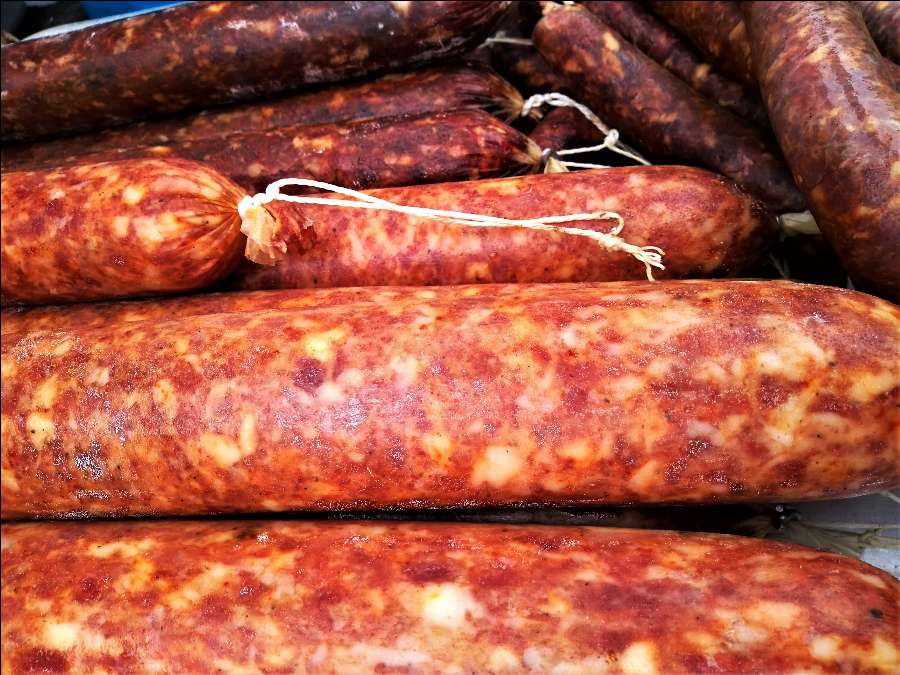
It is among the most common meats found in this type of dining selection. Continue reading to learn more about Salami’s (I wrote about sugar and carbs in salami also) place in the world of prepared meats.
Here is salami:
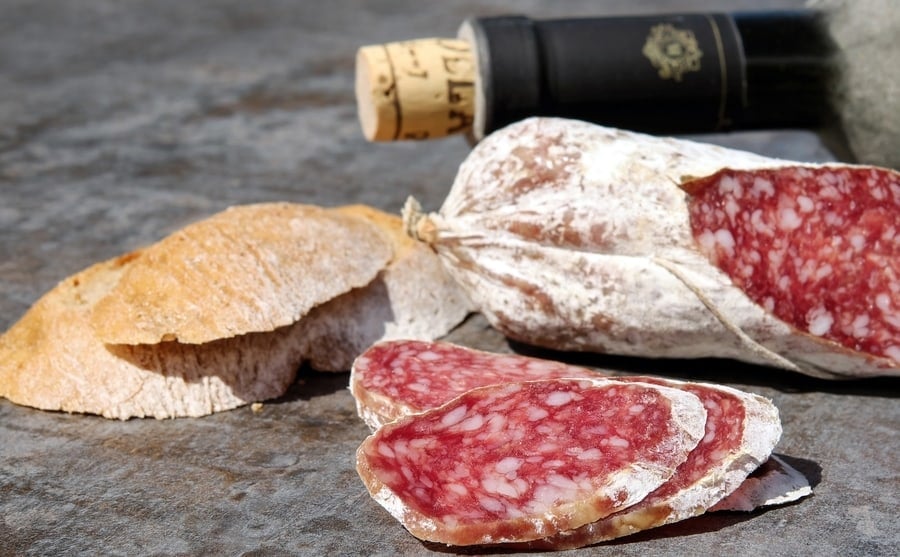
Here is salumi:
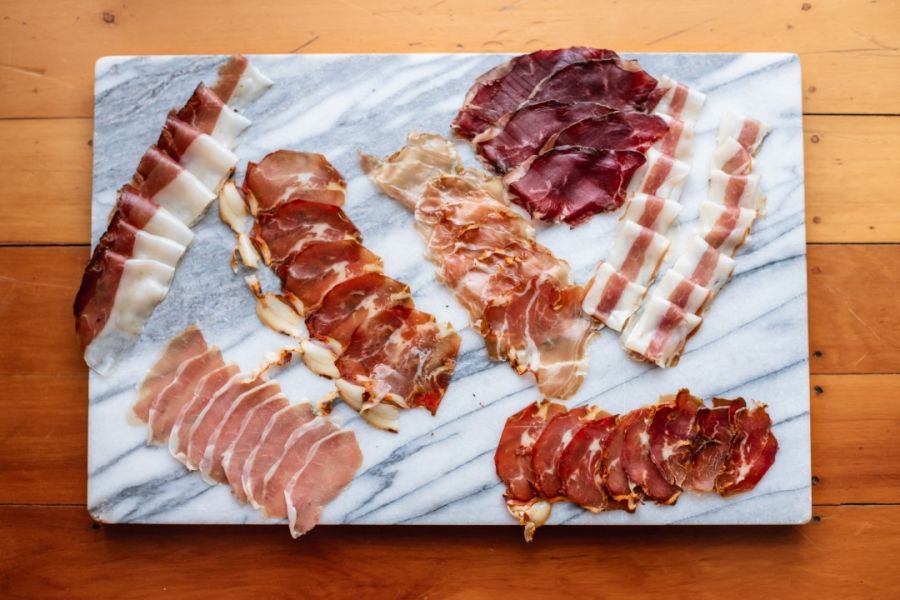
Here are different types of Charcuterie (the above picture would be considered charcuterie also):
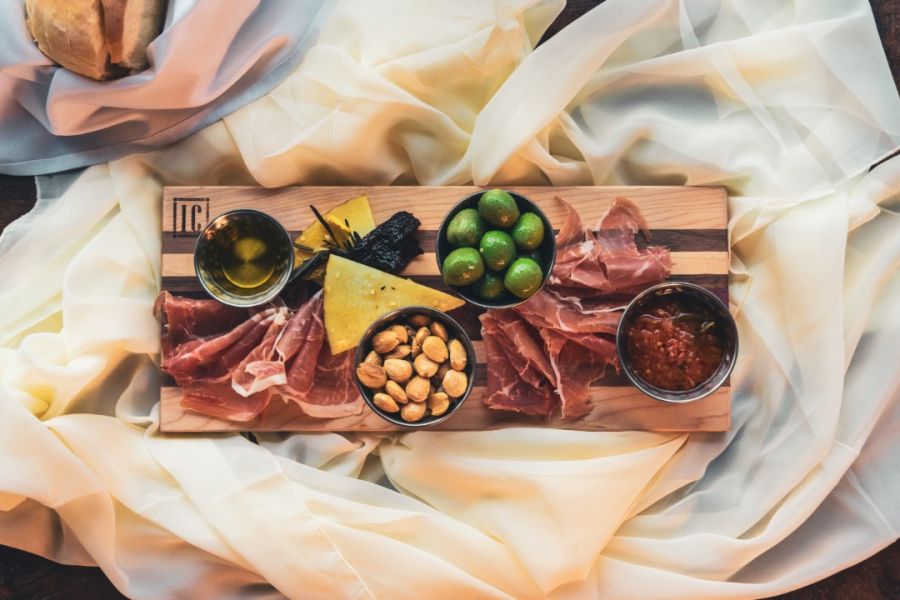
Though the two vary in spelling by just one simple letter, Salami and Salumi are not interchangeable terms. While this can seem confusing to those not well-versed in cured meats, it is quite simple to understand.
Salami is a dry-cured meat consisting of different flavors and ground-up meat packaged in a casing. It can be eaten without being cooked; its cured with salt, sometimes fermented to acidify it, then dried (mortadella/baloni are considered emulsified salami). Depending on the style, it can also be cold smoked to finish the flavor profile.
Conversely, Salumi refers to whole-muscle dry curd meat, such as Proscuitto, Lonza, Coppa, Spalla, Pancetta, and the beef Braesola. It comprises the major muscle groups of a pig and how they were traditionally butchered into whole muscles, then cured and preserved.
While charcuterie refers to, in the modern sense, anything that goes on a tasting platter (charcuterie board), the traditional definition of charcuterie is from a French style of crafting small goods from meat.
So, if you are having trouble remembering the relation of Salami (cut and whole salami storage is also different) to Salumi, then simply observe the spelling of each.
Popular Salami for a Charcuterie Board
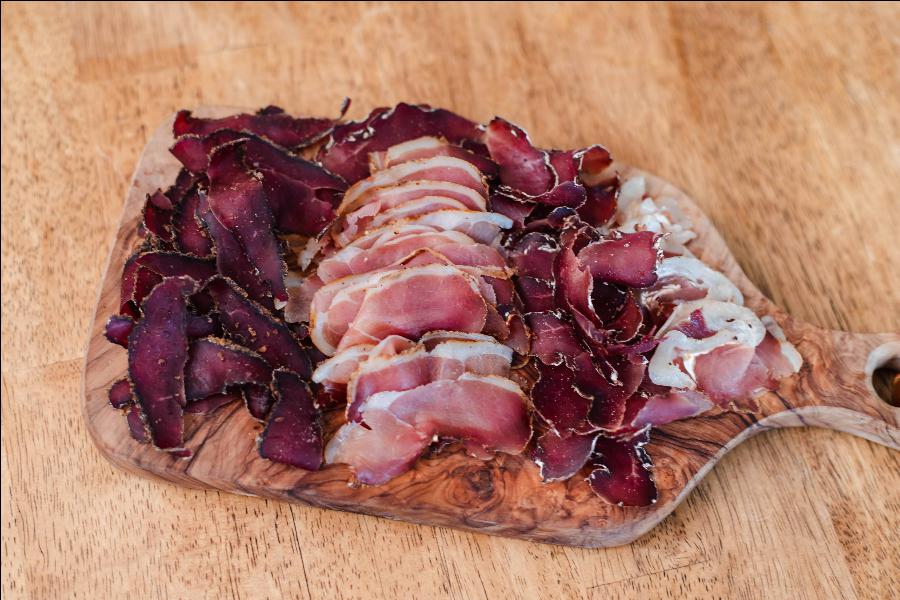
You can also use other cured or cooked meats for your charcuterie board if you are looking to wow your guests.
A few popular meat selections for a well-crafted Charcuterie board may include prosciutto, jamón Ibérico, jamón Serrano, speck, mortadella, capicola, chorizo, or various styles of pate.
Of course, there are plenty of other items that you can add to your Charcuterie (charcuterie cured meats are expensive, here I wrote why) board to infuse more flavor. These can include cheeses that pair well with the meats and something to garnish or add to the meat (like a cracker that it can be eaten on, olives that it can be garnished with, etc.).
If you are unsure what types of meat to offer, select a few that vary in flavor components so your guests can pick their favorite type.
Modern Charcuterie vs. Traditional (French) Charcuterie
Traditional French Charcuterie refers specifically to the rillettes, terrines, salamis, and dry cured meats that use every portion of the animal as possible to cook, seal, and store for later consumption.
This consumption practice was created to use every component- including the liver, offal, and intestines- to get the most bang for your buck with the pig (or animal of choice).
This practice also helped to prolong the meats into consumable options that would be available weeks to months later with minimal preparation needed.
Interestingly, this practice has been threaded with the modern Charcuterie practice of using the majority of the animal in its preparation.
Traditional French Charcuterie (pronounced “Shar-cout-tar-ree”)
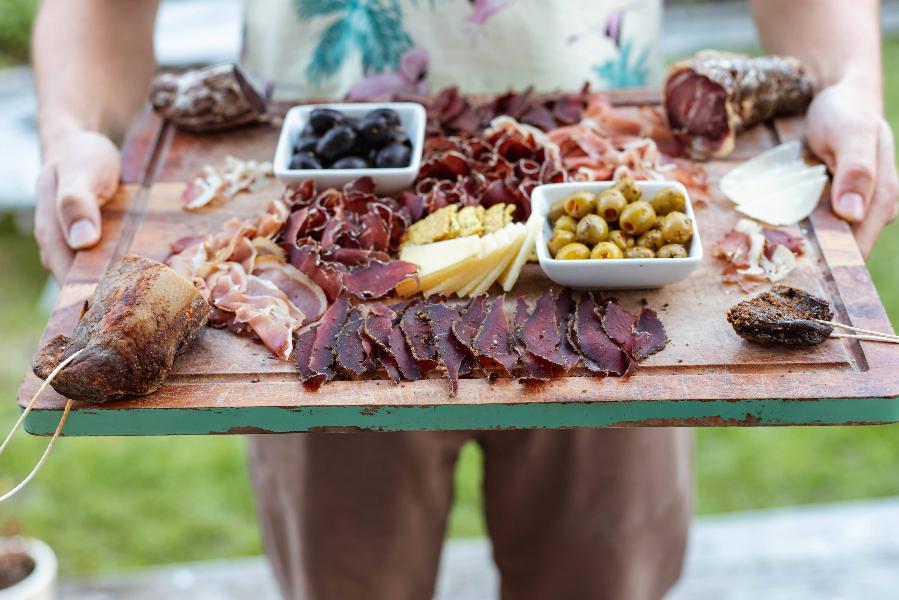
Modern Charcuterie, on the other hand, more often refers to dry cured meats and nearly anything that is considered antipasti on a charcuterie board.
A Charcuterie board or platter can include cured (not cooked) meats like Salami (among others). However, the idea with the prepared meats on modern charcuterie boards is to consume still those that use the entirety of the animal.
Therefore, you will not generally find steak, chicken, or another form of meat on a Charcuterie board. Instead, you will find prepared meats that have been cured or cooked, beautifully spread out, and ready for consumption.
If you want some unique ideas on charcuterie boards, here is another article I wrote.

